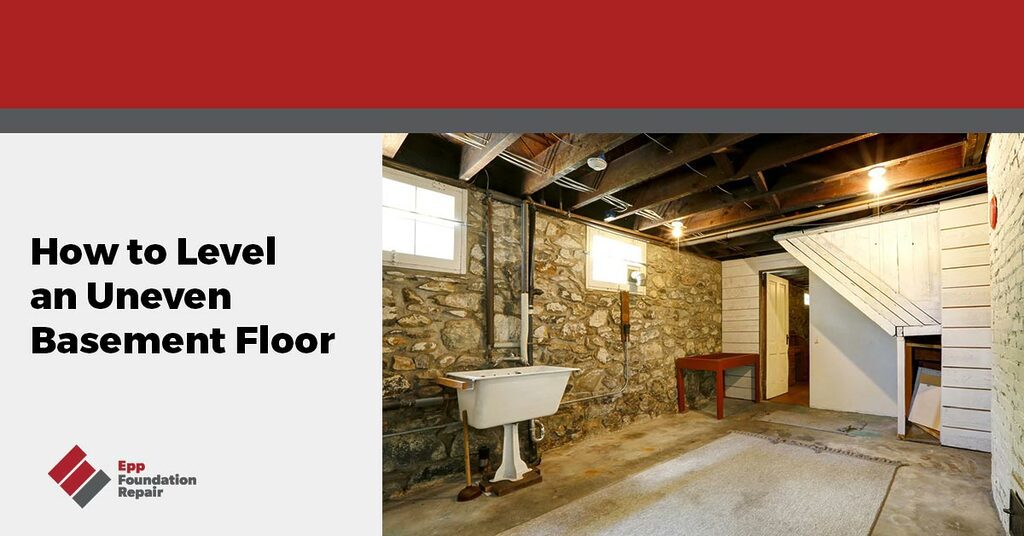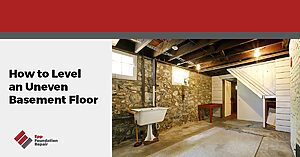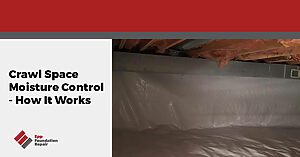There are two time-tested methods for leveling an uneven concrete basement floor- polyjacking and underpinning. This article will cover why your basement floor may have become uneven, what polyjacking and underpinning are, how they work, and why DIY solutions are a bad idea.
Why Is My Basement Floor Uneven?
You can find the reason for your uneven basement floor by looking at the soil surrounding your foundation. Notice these four common soil problems:
• Improper Preparation
Before your home was built, the builders had to compact the soil to prepare it for construction. If there are any site preparation errors, your foundation could settle unevenly.
• Oversaturation
Too much water in the soil can wreak havoc on your basement. It can create issues like uneven settlement of your home, cracks, bowed walls, flooding, and more. Oversaturation happens if your home lacks an efficient drainage system to combat heavy rainfall, snowmelt, and a high water table.
• Expansion and Contraction
If you live in an area with clay-rich soil, your basement may be slowly moving up and down due to the expansion and contraction of the soil during wet and dry seasons. Over time, this can lead to an uneven basement floor and even cracks in your foundation.
• Erosion
If the soil beneath your basement erodes, it will lose its compactness, and the voids will cause your basement to settle unevenly.
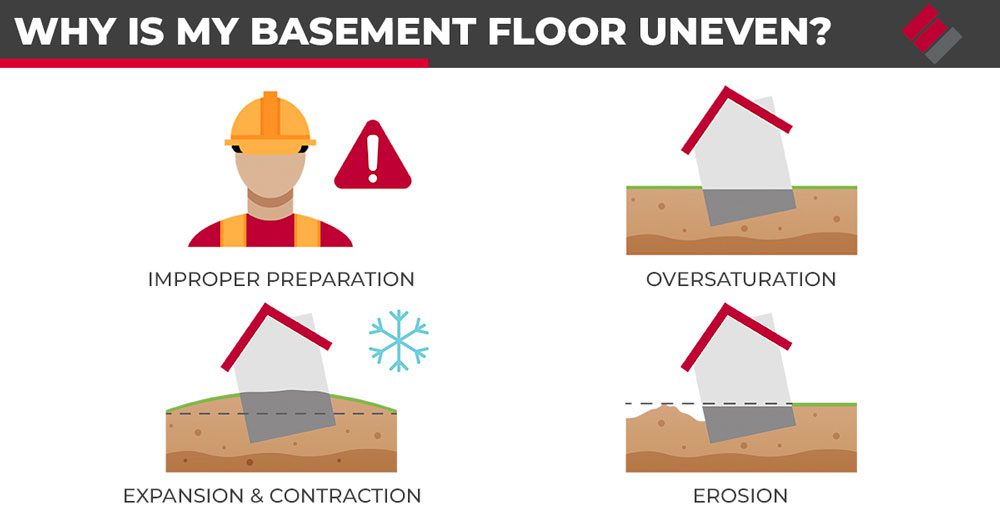
How to Level a Concrete Floor
The best two methods for leveling your concrete basement floor are polyjacking and underpinning.
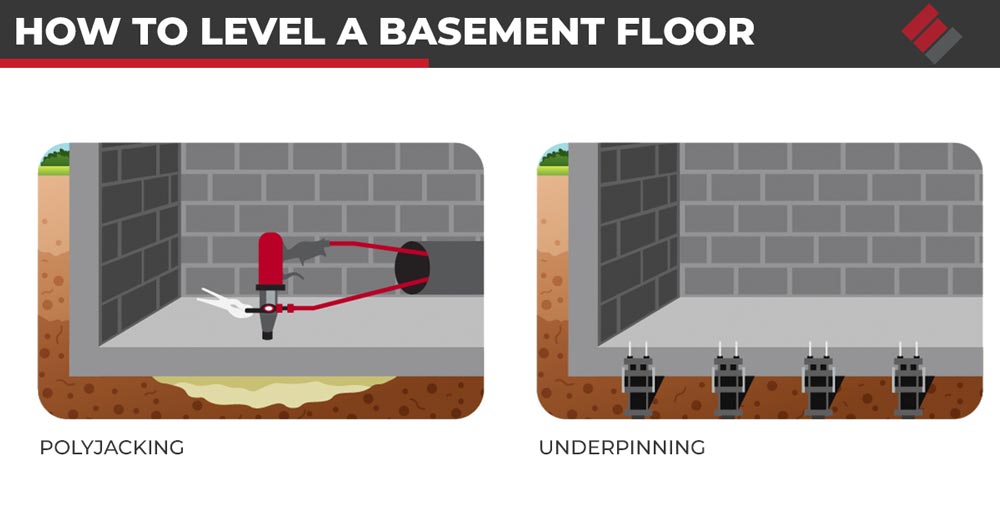
Polyjacking
• What is polyjacking?
Polyjacking is a concrete leveling method that injects polyurethane foam below an unlevel slab to even it out. The foam is an environmentally safe substance that expands to fill any voids beneath a slab while compacting the soil underneath, creating a quick and permanent solution to an uneven concrete floor.
• How does polyjacking work?
Step 1: A professional inspects the uneven slab to determine if polyjacking is the best solution and creates a plan for the injection.
Step 2: Small dime-sized holes are drilled strategically to allow for the polyurethane injection.
Step 3: The polyurethane foam is injected below the concrete slab and rapidly expands. The professional will closely monitor the injection to ensure that the right amount of foam is injected for an even fix.
Step 4: Once the slab is leveled, the dime-sized holes and any cracks are patched.*
Step 5: The work site is cleaned, and the foam is left to cure. Most sites can be used within 15 minutes of job completion.
*At Epp, we pay close attention to detail, so we strive to make the patch-up match the color of the original concrete.
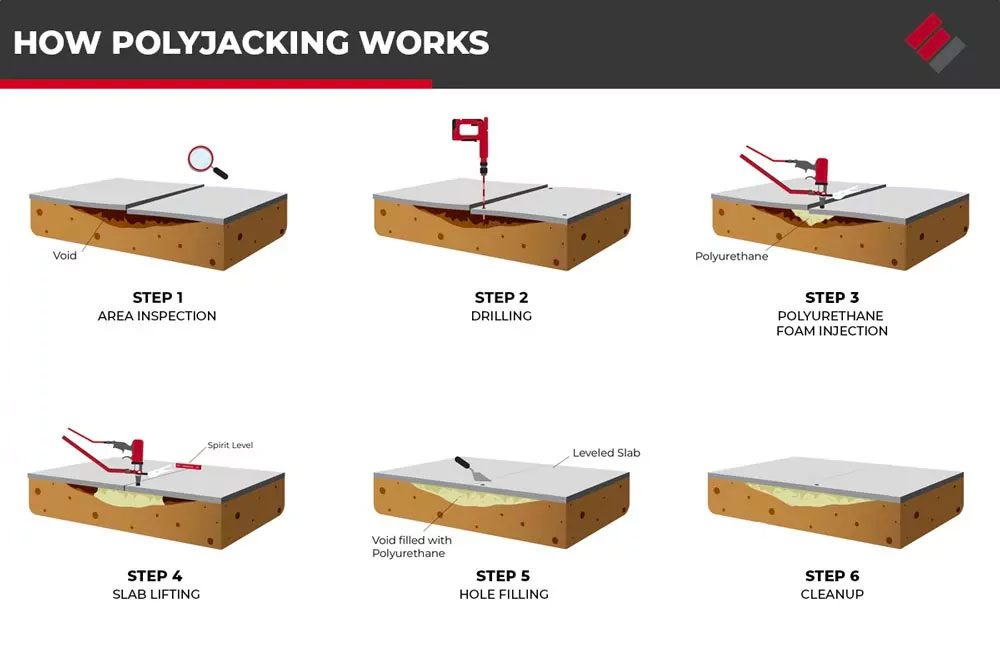
Underpinning
• What is underpinning?
Foundation underpinning involves using push or helical piers to connect a foundation unevenly sinking to stable soil or bedrock and lifting it back up to level it out. Underpinning is a minimally invasive, instant, and permanent concrete leveling solution.
• How does underpinning work?
While push and helical piers have slightly different installation methods due to their different designs, they both follow a similar installation process.
Step 1: A professional will inspect the foundation to determine if underpinning is the best solution, decide whether push or helical piers are best, and where and how many to install.
Step 2: The site is prepared by clearing the area and excavating near the foundation where the pier will go.
Step 3: The pier is driven through the soil until it reaches stable strata or bedrock.
Step 4: The pier is secured to the foundation using brackets, and the home is lifted to the maximum practical level – as far as the foundation can be raised without damaging it.
Step 5: The excavated areas are filled, and the area is restored to its original condition as much as possible.
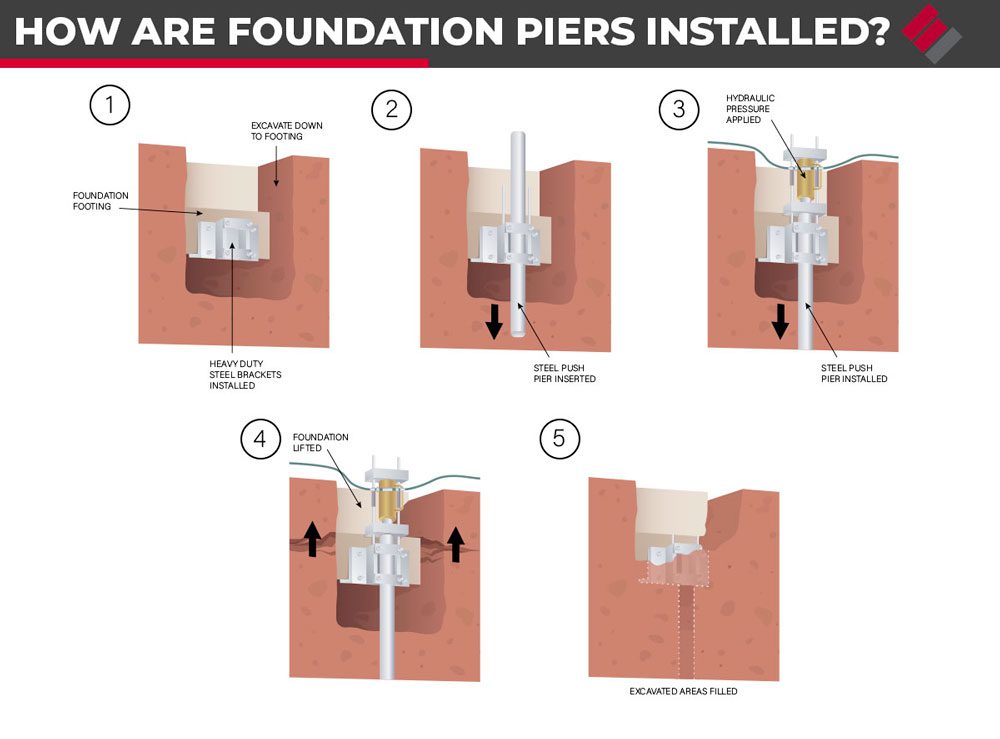
Can I DIY Polyjacking?
While polyjacking may seem straightforward, it is truly a technical process best left to experienced experts.
Polyjacking requires expensive tools to drill through the concrete and to monitor the injection of the polyurethane foam. It also requires skill and precision to determine the correct place to inject the foam and how much to inject so that the final product is a stable and level slab. Too little foam will not correct the issue, but too much foam is worse yet because it will lift the slab too much and can create a whole new problem.
Some have also considered DIY mudjacking, but this, too, is not recommended. Tap the link to learn why.
Can I Use Self-Leveling Concrete to Level My Uneven Basement Floor?
Self-leveling concrete is a popular DIY solution for leveling uneven basement floors, but this tactic has misguided many.
Self-leveling concrete aims to smooth out a concrete surface by filling in dips and smoothing over wavy surfaces. It is like a cosmetic finish on a concrete floor and can help even minor imperfections before laying new floors. However, do not mistake self-leveling concrete with actually leveling the concrete slab because you have not corrected the underlying problem; you have only masked the problem. Over time, the problem will present itself again.
If your basement floor becomes unlevel due to unstable or eroded soil, adding a self-leveling compound will worsen the problem because of the added weight to the slab. Other common issues include cracking, crumbling, and a short working window.
We recommend sticking to polyjacking and underpinning as the premium solutions for leveling your concrete basement floor.
If your basement floor is uneven, schedule your free home inspection and estimate. We can help you determine the reason for your unlevel floors and the best way to correct it. We service areas in Nebraska, Iowa, Kansas, and Missouri.

